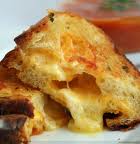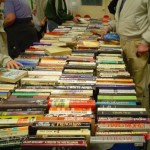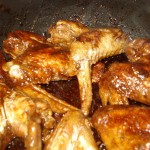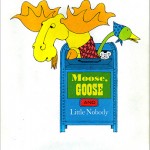 “I want you to write the blog post about the library,” my dear friend B said to me yesterday.
“I want you to write the blog post about the library,” my dear friend B said to me yesterday.
Last week I told you and B that I found myself wandering—and, let’s be honest, a bit low on funds. And instead of going to the bookstore where I knew I couldn’t buy anything, I found myself on solid ground at my public library. (That’s the main branch, in the photo above.)
I was stunned, literally stunned, at what wonderful places libraries can be. I felt occupied by exclamation points, like Ginsberg’s supermarket in California: there were whole families shopping for books! Shelves and shelves of books! People from all walks of life! Passes for area museums! Movies and TV shows on DVD! A reading area for the kids!
My daughters got their first library cards this week, and though neither of them can even read just yet, it warmed my heart to see them grabbing books off the shelves, then sitting quietly on the alphabet block carpet and turning pages. They made for the reading area as if they were at home. They’ve been to libraries before, but with their cards, I got to introduce them to the magic of libraries: so many books to read, take away, return, and then, the miracle: you can get more!
At their best, libraries strike me as an exercise in loving generously: one that I can only begin to compare to my mother’s love. My mother loves so abundantly that if you love peanut M&M’s, giving you a handful of them is not enough: she must buy you the entire 5-pound yellow bag. This is a literal, not a symbolic, example.
My library visit made me wonder: why in the world do I not visit public libraries more often? For that matter, why have I chosen to haunt bookstores, (mostly) new and used, independent and corporate, over libraries? Why would I rather buy my books, rather than borrow them? And now this tendency even strikes me as miserly, particularly in comparison to the trust and abundance of libraries’ (and yes, my mother’s) goodwill: I don’t want to have to give books back. I want to be able to keep them all to myself, forever and ever if I want. With apologies to Marxists, it’s not Scrooge’s piles of wealth which are the real problem, right? It’s his unwillingness to share.
Well, why not hang out in libraries? There’s the too-quiet atmosphere, for one thing. In cafes, I like working around others who are working. But I want to be able to talk to them occasionally, too, maybe even to ask what they’re reading. I want to be able to listen to music, sometimes even music that the baristas choose for me from their iPods. I want an iced mocha that I can nurse and an oatmeal chocolate chip cookie that I can nibble. Give me a piano that an earnest teenager will ventolin or albuterol occasionally strum. Since we’re in the Pacific Northwest, give me warmly painted walls, and lots and lots of windows for natural light. Give me babies who will peek at me over their mothers’ shoulders, and a space where toddlers can wield their crayons freely. No cubicles. Give me tables, lots of tables, ‘neath the reading lights above. Don’t fence me in.
Libraries are not my preferred workspaces, and for a long time, especially during graduate school, libraries meant research libraries. They did not feel like spaces designed for pleasure and quiet revelation (or revolution); they were spaces designed for hushed, solemn work. Gorgeous, but intimidating and uncomfortable.
But why in the world have I not visited libraries more often? See, if I had just discovered libraries, if I hadn’t come from a family of voracious readers and librarians, that would be one thing. But if you’ve been reading along for a while now, you already know that the written word is earth, air, water, fire for my soul. And I went to the library all the time when I was a little girl. Summer reading clubs were a way to keep track of books I had read, sure, but they were icing on the cake. Moreover, one of my aunts was a children’s librarian in San Francisco. Her husband, my uncle, was also a librarian at the Western Addition branch there, and was a major force behind its Japanese language collection. And my dad was a librarian, the head of Circulation, here.
Marveling at the wonderfulness of my public library, I thought: Oh, shit. Is that why I’ve avoided libraries?
For a month I’ve been working on a project which involves my dad. So everything, even grilled cheese sandwiches, feels like it’s circling back to him. Characters in Colson Whitehead’s amazing novel The Intuitionist are nervous in elevators because elevators remind them of coffins. By comparison, I wonder if I’ve avoided libraries because their silence reminds me of the silence of uncomfortable introspection, or death.
But here’s a clue. I am writing this entry the night before Father’s Day, a holiday that’s been difficult for me since 1984. (More difficult memories: I wrote a poem for my dad a few weeks before he died, and my uncle read it as part of my dad’s eulogy.) And this week at the library I was looking up Zadie Smith’s book of essays, and reached over to get some scratch paper. I stared at the yellowing piece of paper for a minute, with some nostalgia and even love. For scratch paper, my library still uses old index cards from card catalogs. “Research outlook,” the title on my card said.
Publication year on the card: 1983. That’s the year before my dad died.
Maybe that title’s a command.
P.S. Coming up this week: revisions of earlier assignments. A break from death, for us all. If you’ve been reading from the beginning, many thanks.






